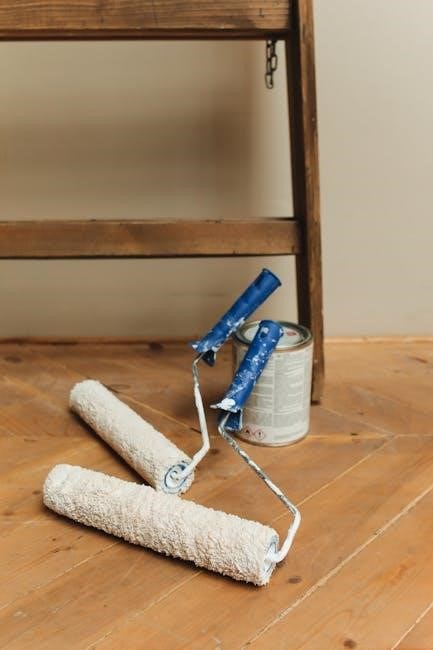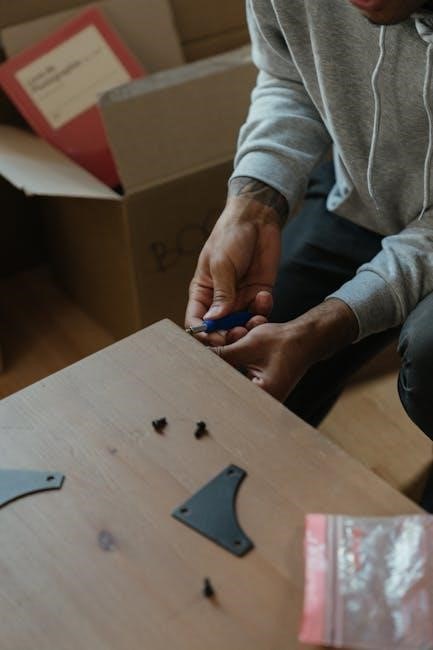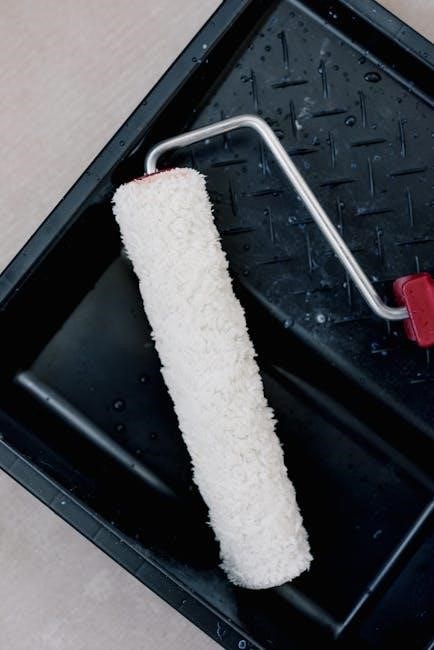DIY Cookie Kit Instructions: A Comprehensive Guide
Embark on a delightful baking journey with our comprehensive guide to DIY cookie kit instructions! This article unveils the secrets to crafting memorable cookie decorating experiences, perfect for gifting, parties, or simply enjoying a creative afternoon. Discover essential tips, tricks, and step-by-step guidance to elevate your cookie kits.
What is a DIY Cookie Kit?

A DIY cookie kit is essentially a curated collection of ingredients and tools designed to simplify the process of decorating cookies at home. Imagine a box filled with pre-baked sugar cookies in fun shapes, vibrant icing in various colors, an assortment of sprinkles, and clear, easy-to-follow instructions. That’s the essence of a DIY cookie kit!
These kits are not just about convenience; they’re about fostering creativity and creating memorable experiences. They eliminate the need to gather individual ingredients and bake the cookies from scratch, saving time and effort. Instead, they offer a ready-made canvas for artistic expression, allowing users of all ages to unleash their inner decorator.
DIY cookie kits are incredibly versatile. They can be themed for holidays like Christmas, birthdays, or other special occasions. They can also be customized with different cookie shapes, icing colors, and sprinkle combinations to suit individual preferences. Moreover, they make fantastic gifts, party activities, or even a fun family project on a rainy day.
The beauty of a DIY cookie kit lies in its ability to bring people together through a shared activity. Whether it’s a group of friends decorating cookies at a party or a parent and child bonding over a creative project, these kits provide a platform for connection and fun.
Essential Supplies for Your DIY Cookie Kit

Creating a fantastic DIY cookie kit requires careful consideration of the essential supplies. The core components include the cookies themselves, icing, sprinkles, and packaging. Let’s break down each element:
Cookies: Opt for sugar cookies or gingerbread cookies, pre-baked and cooled. Aim for a consistent size and shape for easy decorating. Consider using various shapes relevant to the theme of your kit.

Icing: Royal icing is ideal due to its smooth consistency and ability to harden. Prepare multiple colors to provide variety. Gel food coloring is best for achieving vibrant hues. Package icing in piping bags or containers for easy application.
Sprinkles and Decorations: Offer an assortment of sprinkles, edible glitter, candies, and other decorative elements. Choose items that complement the cookie and icing colors. Small containers or bags are perfect for packaging these.
Packaging: Use clear treat bags to hold the cookies, keeping them fresh and visible. Include twist ties or ribbon to seal the bags. A sturdy box or container is needed to hold all the components. Consider adding decorative labels or stickers to enhance the presentation.
Additional Supplies: Include toothpicks or skewers for spreading icing and creating details. Consider adding parchment paper squares for easy cleanup. Don’t forget an instruction card with clear, concise directions.
Baking the Cookies: Recipes and Tips
The foundation of any great DIY cookie kit lies in the quality of the cookies themselves. Here’s a breakdown of recipes and tips to ensure your cookies are delicious and perfect for decorating:
Sugar Cookie Recipe: A classic sugar cookie recipe is ideal. Ensure the dough is chilled before rolling to prevent spreading. Use cookie cutters to create consistent shapes. Bake until lightly golden around the edges.
Gingerbread Cookie Recipe: For a festive touch, opt for gingerbread cookies. The spices add warmth and flavor. Roll the dough thinly and use sturdy cookie cutters. Bake until firm and fragrant.
Tips for Baking: Always preheat your oven to the correct temperature. Use parchment paper to prevent sticking. Allow cookies to cool completely on a wire rack before decorating. Bake cookies in batches to ensure even baking.
Preventing Spreading: Chilling the dough is crucial for preventing spreading. Use cold butter and minimal liquid in your recipe. Avoid overmixing the dough, which can develop gluten. If spreading is still an issue, add a tablespoon of flour at a time.
Cookie Consistency: Aim for a slightly crisp exterior and a soft interior. Avoid overbaking, which can result in dry cookies. Store baked cookies in an airtight container to maintain freshness.
Making the Royal Icing: Consistency is Key
Royal icing is the quintessential choice for cookie decorating, offering a smooth, glossy finish. Achieving the right consistency is critical for various decorating techniques. Here’s how to master the art of royal icing:
Basic Royal Icing Recipe: Combine powdered sugar, meringue powder, and water. Mix on low speed until combined, then increase speed until stiff peaks form. Adjust water for desired consistency.
Understanding Consistency: Royal icing has three main consistencies: outlining, flooding, and detail. Outlining icing should be thick enough to hold its shape. Flooding icing should be thin enough to spread evenly. Detail icing should be slightly thicker than flooding icing.
Adjusting Consistency: Add water, a teaspoon at a time, to thin icing. Add powdered sugar, a tablespoon at a time, to thicken icing. Mix thoroughly after each addition.
Coloring Royal Icing: Use gel food coloring for vibrant colors. Add color gradually until desired shade is achieved. Avoid liquid food coloring, which can alter the consistency.
Tips for Success: Use a stand mixer for best results. Sift powdered sugar to remove lumps. Store royal icing in an airtight container to prevent drying. Cover the surface of the icing with plastic wrap to prevent crusting.
Packaging the Cookies: Keeping Them Fresh
Proper packaging is vital for maintaining the freshness and appeal of your beautifully baked cookies within the DIY kit. Here’s a guide to effective cookie packaging techniques:
Individual Wrapping: Wrap each cookie individually in food-grade cellophane bags or plastic wrap. This prevents cookies from sticking together and maintains their individual freshness.
Airtight Containers: Place the wrapped cookies in an airtight container, such as a tin box or a plastic container with a tight-fitting lid. This helps prevent moisture and air from affecting the cookies.
Desiccants: Consider adding a food-safe desiccant packet to the container. Desiccants absorb moisture and further extend the shelf life of the cookies.
Padding: Line the bottom of the container with parchment paper or bubble wrap to protect the cookies from breakage during transport.
Presentation: Arrange the cookies neatly and attractively within the container. This enhances the overall appeal of the DIY cookie kit.
Sealing: Ensure the container is securely sealed to prevent air from entering. Use tape or a decorative ribbon to add a touch of elegance.
Storage: Store the packaged cookies in a cool, dry place away from direct sunlight. This will help maintain their freshness and flavor.
Packaging the Icing: Ensuring Easy Use
The way you package your royal icing is crucial for easy and mess-free cookie decorating. Here’s how to properly package icing for your DIY cookie kits:
Icing Bags: Use disposable or reusable piping bags made of food-grade plastic. These bags are designed to hold icing and allow for controlled dispensing.
Filling the Bags: Fill the icing bags with the desired amount of royal icing, leaving some space at the top. Avoid overfilling to prevent spills.
Sealing the Bags: Twist the top of the icing bag tightly and secure it with a rubber band or a piping bag tie. This prevents the icing from leaking out.
Tip Options: You can either include pre-cut piping tips or leave the tip of the bag uncut. If providing tips, attach them securely to the bags.
Color Coding: Use different colored bags or labels to distinguish between different icing colors. This makes it easy for users to identify the desired color.
Bag Support: Include a small clip or bag stand to help users keep the icing bags upright while decorating.
Storage: Store the filled icing bags in an airtight container or a resealable bag to prevent the icing from drying out. Keep them refrigerated until use.
Adding Sprinkles and Decorations: A Variety of Options
Sprinkles and edible decorations are the jewels of cookie decorating, offering endless possibilities for creative expression. When assembling your DIY cookie kit, provide a diverse selection of options to inspire imaginative designs.
Variety is Key: Include an assortment of sprinkles in different shapes, sizes, colors, and textures. Consider classic jimmies, nonpareils, sanding sugar, and edible glitter.
Edible Accents: Add edible pearls, sugar crystals, chocolate chips, mini marshmallows, and dried fruit pieces for added dimension and flavor.
Themed Decorations: Tailor your selection to suit specific themes or holidays. For example, include heart-shaped sprinkles for Valentine’s Day or star-shaped sprinkles for Christmas.
Packaging: Package sprinkles and decorations in small, airtight containers or resealable bags to maintain freshness and prevent spills.
Color Coordination: Choose colors that complement your icing and cookie designs. Consider using a cohesive color palette for a visually appealing kit.
Creative Tools: Include small spoons or tweezers to help with precise placement of decorations.
Inspiration: Provide inspiration by including a small card with design ideas or examples of decorated cookies.
Creating the Instruction Card: Clear and Concise
The instruction card is a crucial component of your DIY cookie kit, guiding users through the decorating process with clarity and ease. A well-crafted instruction card enhances the overall experience, ensuring success and enjoyment for bakers of all skill levels.
Simplicity is Key: Use clear, concise language that is easy to understand. Avoid jargon or overly technical terms. Break down the steps into manageable chunks.
Visual Aids: Incorporate images or illustrations to visually demonstrate each step. This is particularly helpful for younger bakers or those who are new to cookie decorating.
Step-by-Step Guide: Provide a numbered or bulleted list of instructions, outlining each stage of the decorating process from preparing the icing to adding sprinkles.
Icing Consistency: Include specific instructions on achieving the desired icing consistency for outlining and flooding cookies.
Tips and Tricks: Share helpful tips and tricks to prevent common decorating mistakes, such as preventing air bubbles or achieving smooth icing surfaces.
Safety Precautions: Include any necessary safety precautions, such as supervision for young children or handling of sharp tools.
Customization Options: Offer suggestions for customizing the designs or experimenting with different decorating techniques.
DIY Cookie Kit Instructions: Step-by-Step Guide
This step-by-step guide provides a clear and concise roadmap for using your DIY cookie kit, ensuring a fun and successful decorating experience. Follow these instructions carefully to create beautiful and delicious cookies.
- Prepare Your Workspace: Clear a clean, flat surface and gather all the components of your cookie kit: cookies, icing, sprinkles, and any other decorations.
- Knead the Icing: Gently knead the icing bags for 1-2 minutes to ensure a smooth and consistent texture. This helps to remove any air bubbles and makes the icing easier to work with.
- Cut the Icing Bag: Use scissors to carefully snip a small opening at the tip of the icing bag. Start with a small opening, as you can always make it larger if needed.
- Outline the Cookie: Squeeze the icing bag gently to outline the edge of the cookie. This creates a border that will contain the flood icing.
- Flood the Cookie: Fill in the outlined area with icing, using a toothpick or scribe tool to spread the icing evenly.
- Add Sprinkles and Decorations: While the icing is still wet, add sprinkles, edible glitter, or any other decorations.
- Let the Icing Set: Allow the icing to set completely before handling or stacking the cookies. This may take several hours, or overnight.
- Enjoy Your Creations: Once the icing is set, your decorated cookies are ready to be enjoyed!
Printable Instruction Card Template
A well-designed instruction card is vital for a successful DIY cookie kit. This section offers a printable template, customizable to your specific kit, ensuring clear and easy-to-follow instructions for your customers or recipients;
Key elements to include in your instruction card:
- Kit Contents: Clearly list all items included in the kit (cookies, icing colors, sprinkles, etc.).
- Allergen Information: Provide a comprehensive list of potential allergens (nuts, dairy, gluten, etc.).
- Step-by-Step Instructions: Offer simple, numbered instructions for decorating the cookies. Include tips for kneading icing, cutting bags, and applying decorations.
- Visual Aids: Incorporate illustrations or photos to visually guide users through the decorating process.
- Icing Consistency Tips: Explain how to adjust icing consistency if needed (adding water for thinner icing).
- Setting Time: Specify the recommended time for the icing to set before handling or storing the cookies;
- Storage Instructions: Provide guidance on how to store decorated cookies to maintain freshness.
- Contact Information: Include your business name, logo, and contact details for any questions or concerns.
- Creative Ideas: Offer inspiration with sample designs or decorating techniques.
Download our free template and personalize it with your branding and specific kit details. A professional and informative instruction card enhances the overall experience.
Marketing Your DIY Cookie Kits
Effective marketing is crucial to the success of your DIY cookie kits. Here are some strategies to promote your kits and reach a wider audience.
Online Presence:
- Social Media: Showcase your kits on platforms like Instagram, Facebook, and Pinterest. Use high-quality photos and videos to highlight the fun and creativity involved.
- E-commerce Platforms: Sell your kits on online marketplaces like Etsy or Shopify. Provide detailed product descriptions and attractive images.
- Website: Create a website to showcase your kits, share customer testimonials, and offer online ordering.
- Email Marketing: Build an email list and send newsletters with promotions, new kit announcements, and decorating tips.
Local Outreach:
- Farmers Markets: Set up a booth at local farmers markets to sell your kits and engage with potential customers.
- Craft Fairs: Participate in craft fairs and holiday markets to showcase your kits and offer samples.
- Local Businesses: Partner with local businesses like bakeries, coffee shops, or gift shops to sell your kits on consignment.

Promotional Strategies:
- Discounts and Bundles: Offer discounts for bulk orders or create bundled packages with additional decorations.
- Contests and Giveaways: Host social media contests or giveaways to generate excitement and increase brand awareness.
- Collaborations: Partner with influencers or bloggers to promote your kits to their audiences.
Highlight the unique aspects of your kits, such as homemade cookies, unique icing flavors, or custom designs, to stand out from the competition.
DIY Cookie Kits for Different Occasions
DIY cookie kits are incredibly versatile and can be tailored to suit a wide array of occasions. Here are some ideas to inspire your creativity:
Holidays:
- Christmas: Include Christmas-themed cookie cutters, red and green icing, and festive sprinkles.
- Easter: Offer egg-shaped cookies, pastel-colored icing, and bunny-themed decorations.
- Halloween: Provide spooky cookie shapes, orange and black icing, and Halloween-themed sprinkles.
- Valentine’s Day: Feature heart-shaped cookies, pink and red icing, and romantic decorations.
Special Events:
- Birthdays: Customize kits with number-shaped cookies, colorful icing, and birthday-themed decorations.
- Baby Showers: Include baby-themed cookie cutters, pastel-colored icing, and edible pearls.
- Weddings: Offer elegant cookie shapes, white and gold icing, and edible glitter.
- Graduations: Feature graduation cap-shaped cookies, school colors icing, and graduation-themed decorations.
Themed Kits:
- Animal Theme: Provide animal-shaped cookie cutters, themed icing colors, and animal-shaped sprinkles.
- Superhero Theme: Include superhero logo cookie cutters, themed icing colors, and superhero-themed decorations.
- Princess Theme: Offer princess-shaped cookie cutters, pastel-colored icing, and crown-shaped sprinkles.
By adapting your cookie kits to different occasions, you can cater to a wider audience and increase their appeal.
Troubleshooting Common Cookie Decorating Issues
Even with the best instructions, cookie decorating can sometimes present challenges. Here’s how to troubleshoot common issues:
Icing Too Thick:
- Add a few drops of water at a time to the icing, mixing thoroughly until you reach the desired consistency. Be careful not to add too much water, as this can make the icing too thin.
Icing Too Thin:
- Add a small amount of powdered sugar to the icing, mixing thoroughly until you reach the desired consistency. Start with a teaspoon of powdered sugar and add more as needed.
Icing Colors Bleeding:
- Ensure the base icing layer is completely dry before adding additional colors or details. Use a fan to speed up the drying process.
Cookies Spreading During Baking:
- Chill the cookie dough for at least 30 minutes before baking. Make sure your oven temperature is accurate and avoid over-baking the cookies.
Sprinkles Not Sticking:
- Apply sprinkles while the icing is still wet. If the icing has already dried, lightly brush the area with a damp brush before adding sprinkles.
Uneven Icing Application:
- Use a piping bag with a small tip for precise application. Practice your piping technique on parchment paper before decorating the cookies.
By addressing these common issues, you can ensure a smoother and more enjoyable cookie decorating experience for everyone.